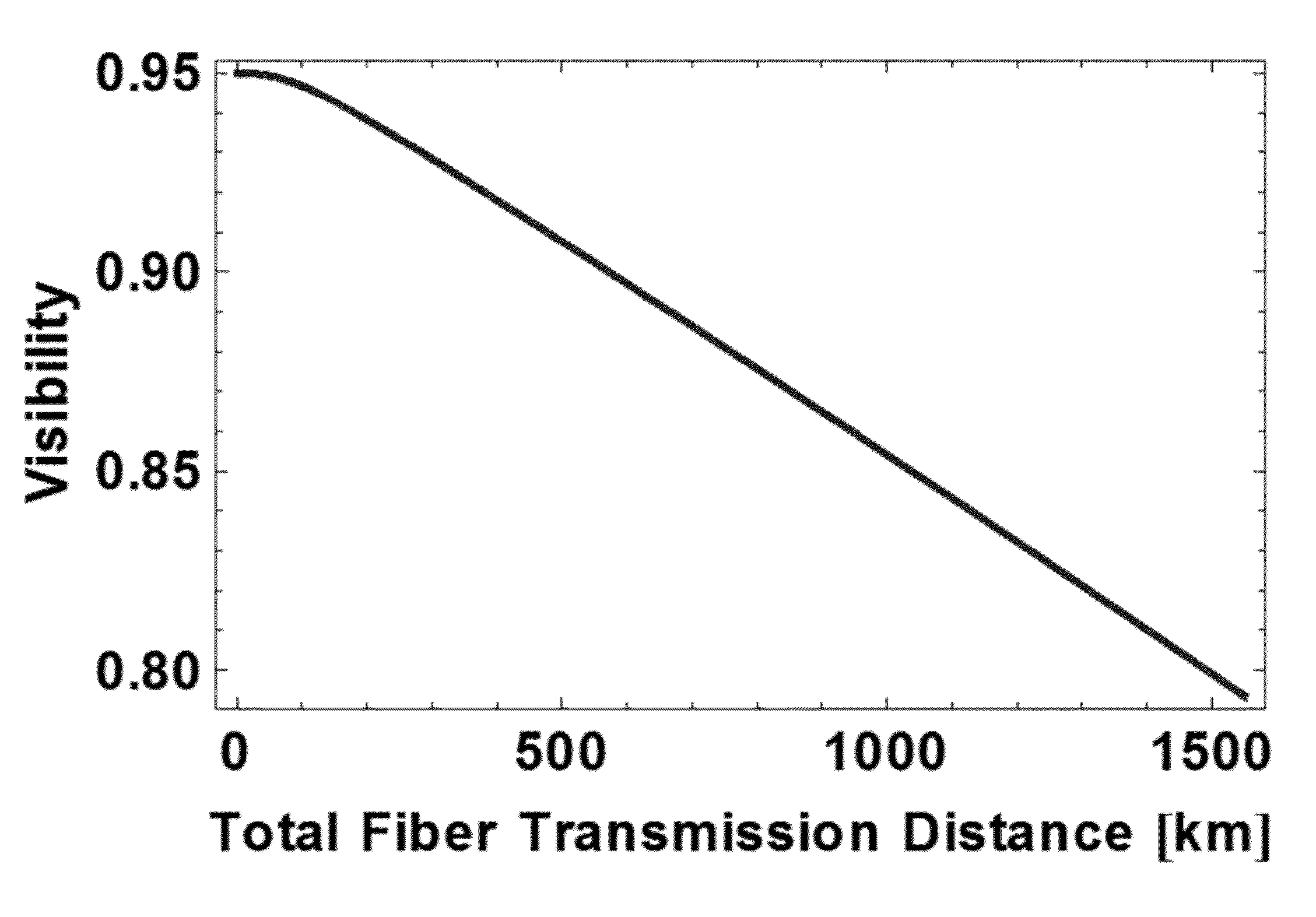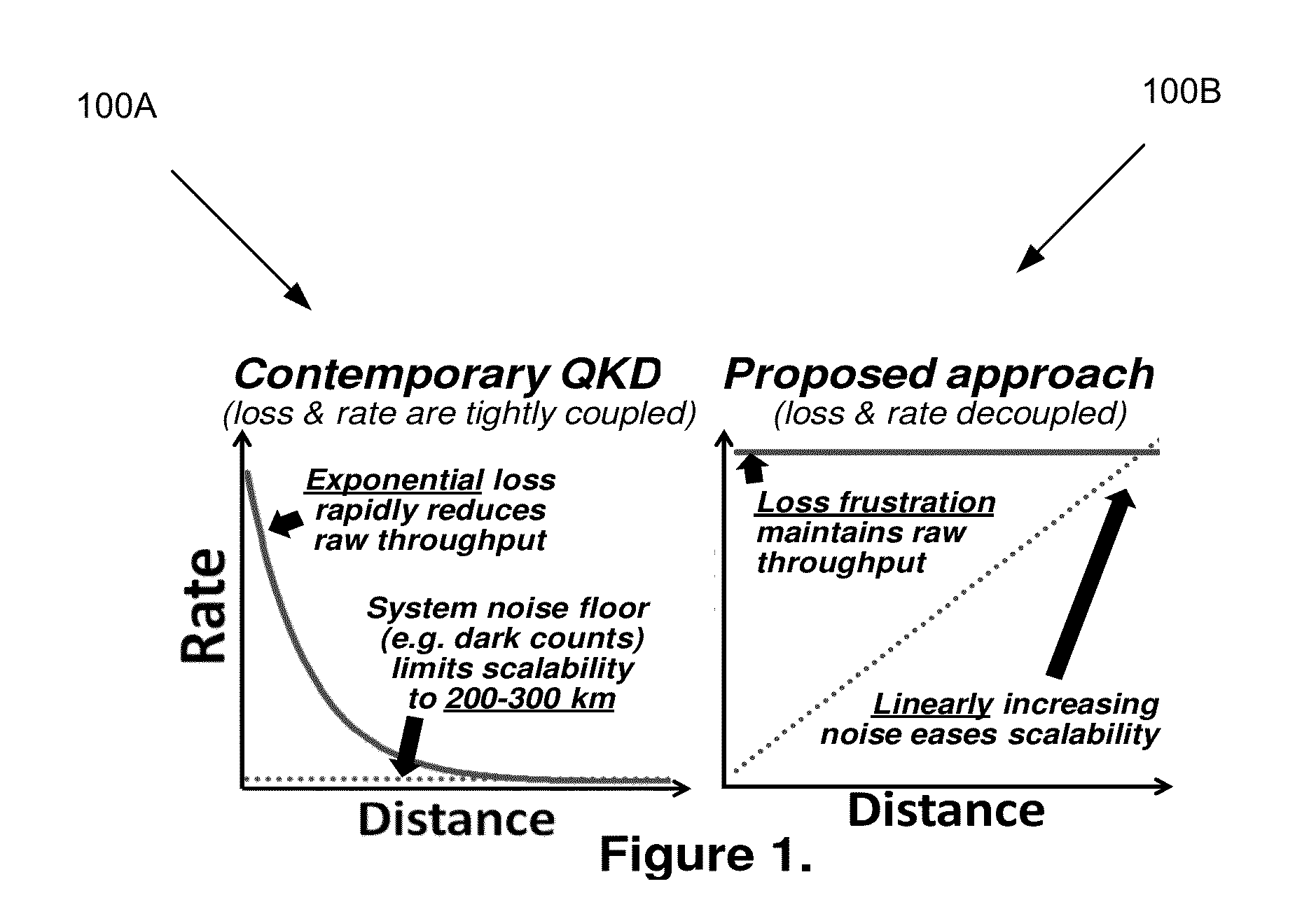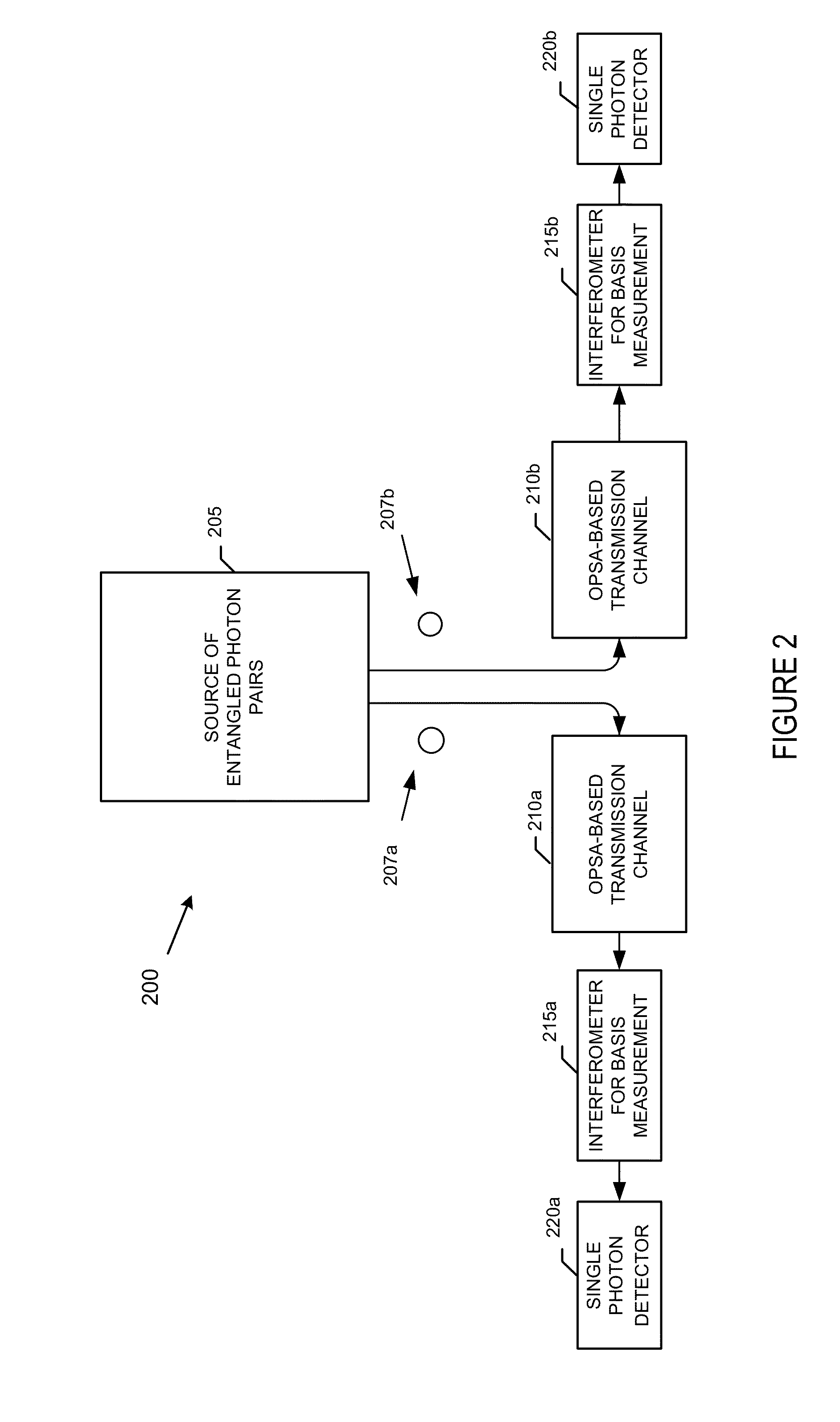Method to mitigate propagation loss in waveguide transmission of quantum states
a waveguide transmission and waveguide technology, applied in the field of quantum communication, can solve the problems of reducing the quality of unknown states, reducing the throughput of transmission loss exponentially, and losing photons in optical fibers, and achieve the effect of facilitating quantum communications
- Summary
- Abstract
- Description
- Claims
- Application Information
AI Technical Summary
Benefits of technology
Problems solved by technology
Method used
Image
Examples
Embodiment Construction
[0031]FIG. 1 shows a comparison of a graph 100A of relative performance of related art quantum communications transmission of photons in an optical medium compared to a graph 100B of same for examples of the present disclosure. Graph 100A shows that the transmission rate with distance into a medium for contemporary quantum state transmission falls off exponentially, rapidly reducing raw throughput. The rate falls off to a relatively constant low value of a noise floor. Loss and transmission rate are tightly coupled. In graph 100B, in contrast, transmission rate remains relatively high with distance into a medium, while noise increases only linearly with distance. Loss in the medium and transmission rate is decoupled.
[0032]Embodiments of the present disclosure decouple an expected exponential drop of quantum communications throughput with distance using a distributed optical phase sensitive amplifier (OPSA) for loss frustration tailored to a known entangled state. Because the entangl...
PUM
 Login to View More
Login to View More Abstract
Description
Claims
Application Information
 Login to View More
Login to View More - R&D
- Intellectual Property
- Life Sciences
- Materials
- Tech Scout
- Unparalleled Data Quality
- Higher Quality Content
- 60% Fewer Hallucinations
Browse by: Latest US Patents, China's latest patents, Technical Efficacy Thesaurus, Application Domain, Technology Topic, Popular Technical Reports.
© 2025 PatSnap. All rights reserved.Legal|Privacy policy|Modern Slavery Act Transparency Statement|Sitemap|About US| Contact US: help@patsnap.com



